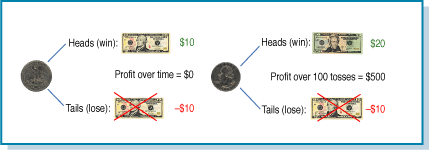Saving Money To Make Money
Measuring Risk
by Lee Leibfarth
The most important concept in building a profitable trading system is to protect your capital. Here's a look at some of the techniques you can apply to measure your risks.
Would you consider riding a roller-coaster at an amusement park? How about taking a whitewater rafting trip or climbing Mt. Everest? For everyone the answer will be different, as we each assess risk and reward differently. Herein lies the reason why one style of trading doesn't work for everyone: as traders, we all have different risk tolerances. This article will discuss some methods of measuring risk and explain some of the basic principles of successful risk management.
DEFINING RISK
In the context of trading, risk refers to the probability of losing money or trading capital. The primary goal of trading is to protect capital. This is, by far, the most important concept in building a profitable trading system. While it may seem that the first goal should be to make a profit, simply focusing on profits (or returns) may cause traders to take unnecessary risks, causing them to burn through a trading account. The fact is, without enough money, traders are bankrupt. Game over. Once a trading account has been lost or severely depleted, it can take a long time and a lot of stress to start over. Proper planning and money management allow traders to establish systems that will protect their most valuable asset: trading capital.
Don't be mistaken; making a profit is an important part of trading and should be the secondary business goal. However, successful traders must keep the big picture in mind by assessing the amount of risk in any given trade. The first step in measuring risk is to understand exactly how much a trader could lose, given the worst-case scenario. Traders should know exactly how much capital they are willing to risk on each individual trade long before pulling the trigger. Traders must also decide how much money they are willing to lose overall (known as maximum drawdown) before it becomes time to implement a new system. Loss potential should never be left to chance.
EDUCATION AND PLANNING
Possibly the best defense against complete disaster is education and planning. As far as a trader is concerned, it is imperative to understand as much as possible about the markets that are being traded and how to control potential losses. Traders must develop a plan that limits loss to an acceptable level if they ever hope to become consistently profitable. Risk will always be present, and successful traders are constantly evaluating that risk by not just asking the question, "What can I win?" but first and foremost, "How much can I afford to lose?"

FIGURE 1: COIN TOSSING. Two methods of coin-tossing are compared along with the outcomes.
...Continued in the November issue of Technical Analysis of STOCKS & COMMODITIES
Excerpted from an article originally published in the November 2006
issue of Technical Analysis of STOCKS & COMMODITIES magazine. All rights
reserved. © Copyright 2006, Technical Analysis, Inc.
Return to November 2006 Contents